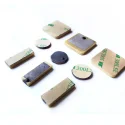2023-02-24
The smart home is a high-efficiency, comfortable, safe, convenient, and environmentally friendly living environment based on a residential platform, integrating architecture, network communication, intelligent home appliances, service platform, system, service, and management. With the progress of technology and the improvement of consumers' demand for life quality, the penetration rate of a smart home is increasing gradually.
In recent years, the Internet of Things devices are becoming more powerful and intelligent, and their size is shrinking. The enhancement of communication protocols is providing a greater range and higher energy efficiency, and consumers are adding more connected devices to their homes. All of this means the possibility of achieving more complex combinations of functions, and multiple devices can work seamlessly and intelligently. Smart products must first properly solve the consumer trust problem. Data is transmitted through the cloud. Consumers are worried about user security privacy leakage risks, security, and system stability, so the application of RFID tags in intelligent furniture anti-counterfeiting technology is becoming more and more important.

Compared with other anti-counterfeiting technologies such as laser anti-counterfeiting and digital anti-counterfeiting, the advantage of using radio frequency identification technology is that each label has a unique ID number in the world——UID, which is placed in ROM when the chip is manufactured It cannot be modified or imitated; it has no mechanical wear and is anti-fouling; the reader has a physical interface that is not directly open to the end user to ensure its security.
RFID tag features:
◆There is only ID anti-counterfeiting chip in the world, which cannot be modified or imitated;
◆Sensitive installation method ensures that the chip cannot be disassembled or transplanted;
◆Traceability of the source of the product (which manufacturer produces it, which channel purchases and sells it);
◆The authenticity check with the manufacturer can be completed through the handheld reader;
◆Label can choose different raw materials according to actual needs.

Implant RFID tags
The method and location of the label implantation can be selected according to the actual production conditions of the enterprise. For example, products such as tables and cabinets can be laminated directly between the veneer and the board during lamination; products like sofas can be Attach the label to the back panel inside the sofa, etc. Two criteria must be ensured when selecting the method and location of tag implantation. One is that the selected implant method will not damage the tag, and the other is that it is easy to read after implantation.
Bind product information
Bind the ID number of the product with the relevant information of the product, including product name, type, production batch number, date, and related sales information, etc. The information content that needs to be bound can be specified by customers according to their actual needs.
Xinyerfid has a deep understanding of the use of RFID smart cards and RFID tags in various application scenarios and can provide design ideas, production services, and technical support for smart cards and RFID tags in various industries. If your enterprise is looking for RFID products, you can also visit our website https://www.xinyerfid.com. Pls, feel free to contact us!
Categories
Title with button
this is a new beginning
We provide all your needed for starting your own online business, and even easier. Establish an online store, Oceans of Products Supply, Integrate Logistics Solution & Comprehensive After-sale Services.




